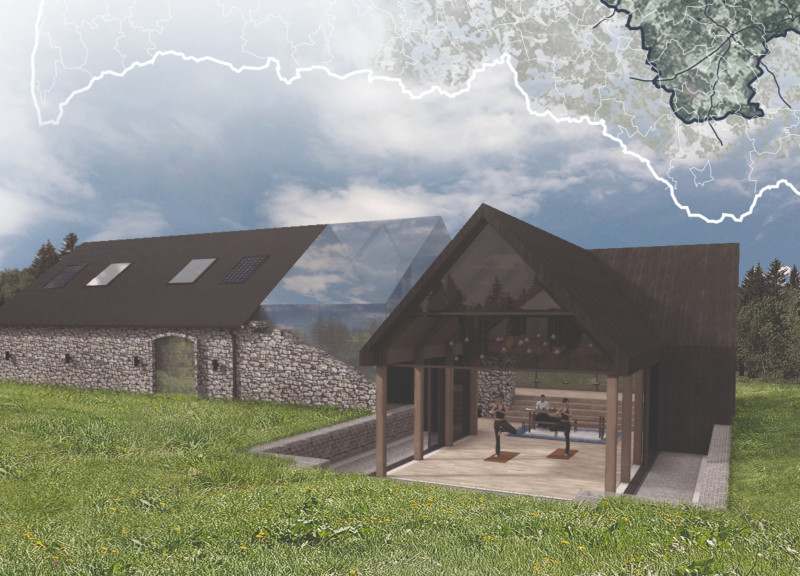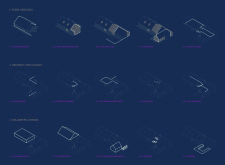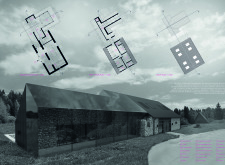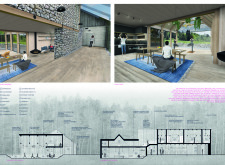5 key facts about this project
Innovative Design Approaches
The design of "Reflection" undergoes a transformation of the existing structure, introducing new elements that marry traditional architecture with contemporary aesthetics. Materials such as local stone are retained to maintain historical continuity, while expansive glass facades provide a modern touch, allowing natural light to penetrate the interior spaces. This integration of glass creates transparency, connecting inhabitants with the natural environment.
Unique features include a series of internal and external pathways that encourage movement throughout the site. The flow between the tea production area, living quarters, and recreational spaces is designed to promote interaction among users while facilitating an immersive experience in the art of tea making. Each element of circulation is purposefully planned to enhance user engagement with both the architecture and the landscape.
Materiality and Function
The selection of materials plays a critical role in the project's execution. Local stone offers durability and historical relevance, while timber provides warmth and complements the stone's robust qualities. Eco-friendly insulation materials contribute to overall energy efficiency, aligning with sustainability goals. Solar panels incorporated into the roof design further enhance the building's ecological footprint, demonstrating a commitment to renewable energy sources.
Space utilization is carefully organized, reflecting the diverse functions within the structure. The tea-making area serves as both a production workspace and an educational platform for visitors, emphasizing the cultural significance of tea. Living spaces are designed for comfort and community, furnished with modern amenities that prioritize functionality. A wellness suite provides an additional layer of experience, focusing on health and relaxation, while an external courtyard invites occupants to engage with the landscape.
For a deeper understanding of the architectural design, materials, and spatial organization of "Reflection," the reader is encouraged to review the architectural plans, sections, and designs presented for comprehensive insights into the project's vision and execution.


























